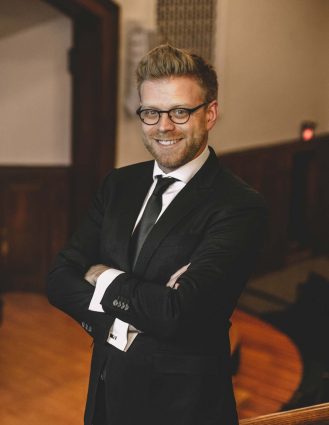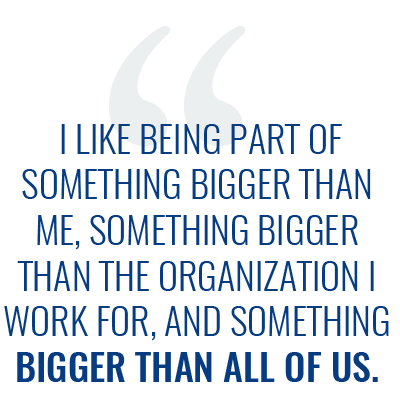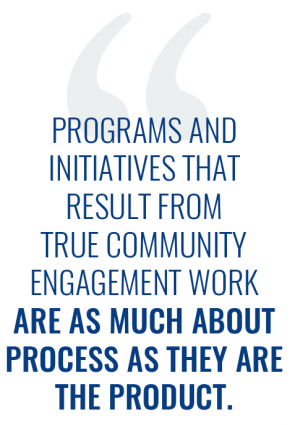This article was originally published by Art Hive Magazine, Summer 2019
Art Hive: What instruments do you play?
Phillip Dunlap: I started taking piano lessons in the third grade, which means I’ve been playing piano for about 27 years at this point. I was classically trained through high school and then pursued jazz into college. I graduated in 2007 with my Masters of Music in jazz performance, a Bachelor of Music in jazz performance, and a Bachelor of Music in music theory and composition.
AH: What sparked your passion for the arts?
PD: My parents encouraged my participation in the arts through music lessons, choir at school, community theater programs, etc. They allowed and made space for me to be involved. I was never into any sort of organized sports, and I was not a great student, but music gave me an outlet of self-expression (whether I realized it at the time is a different story) and a place to be around kids that were also into the arts.
AH: What drew you to Broward County Cultural Division? Aside from trading the Midwestern weather for palm trees and sand.

PD: I am very interested in how municipal governments invest public money in the arts and culture sector. We know that the Arts and Culture economy is a major driver of economic activity and I wanted to be part of those conversations.
AH: We see you worked on a lot of statewide programs and initiatives; how did you decide that was something you wanted to pursue?
PD: I spent many years on the executive board of Missouri Citizens for the Arts, which is Missouri’s statewide arts advocacy organization. The last year of which, I was president of the organization and worked with our lobbyist on coordinating the state-wide arts advocacy agenda (this was a volunteer position). I gained a lot of experience working with state legislators and lobbyists to drive arts policy. Maybe I’m nosy, but I got involved because I recognized that important conversations were happening on the state level and I wanted to be in those conversations. And, a lot of doors open when you volunteer for things that no one else wants to do. The conversations and decisions I was able to drive had a direct impact on the organization I was working for (Jazz St. Louis), which increased my value and impact to the organization.
AH: What’s your favorite part of your work; what has kept you in the arts for more than 10 years (and counting)?

PD: I like being part of something bigger than me, something bigger than the organization I work for, and something bigger than all of us. When I retire, I want to be able too look back on a legacy that made the world a better place and know that I contributed in some way.
AH: You’ve been involved with advocacy efforts in your previous roles; why is this important to you and is there anything you’re looking forward to advocating?
PD: Advocacy is something we all do, but at the same time is foreign and frightening to a lot of people. Advocacy is simply letting those in power (the decision makers in whatever arena you are in) know why something is important to you. In this case, it is the arts. If we are not constantly talking to legislators, county administrators, commissioners, etc., about why the arts are important, why should they support it? Right now, I am excited about advocating for as much support for the arts in Broward County as I can. A rising tide raises all boats and if all work together, we can achieve great things.
AH: What’s the biggest hurdle you’re most proud of overcoming in your career?
PD: One of the biggest hurdles was the career jump from the programming side of non-profit arts, to my current position at the Broward Cultural Division. People like to place you in a box with a label, and if you are in programming, it is difficult to get some folks to think of you outside of that role. This is one of the reasons I started adding so many other aspects to my job in the last four years at Jazz St. Louis. I knew that if I wanted other opportunities, I needed to demonstrate and build capacity in other areas of non profit arts administration. But it wasn’t easy when applying for jobs in places where you don’t have contacts.
AH: What is your favorite example of success in community engagement?

PD: Community Engagement is difficult work and I was just getting started in Community Engagement work before I left Jazz St. Louis. Sure, I did a lot of program development and implementation, but that is not necessarily the same thing. Programs and initiatives that result from true community engagement work are as much about process as they are the product. A lot of people confuse terms like equity and equality and there are important distinctions. A lot of damage can be done if the work is not approached through an equity lens. It is easy to see the “solution” before even stopping to ask those you serve whether your solution actually fits their need. One step further means that you need to involve the group of people you are ultimately trying to serve in the creation of the initiative.
AH: Do you see any specific trends in the arts that you’re excited to tap into?

PD: Funding for the arts in Florida is trending up, and I am excited to tap into that. But on a broader level, I want the Cultural Division to start thinking in terms “next practices” as opposed to “trends” and “best practices”. If we focus on the latter two, we will always be behind. I am not intimating that we are behind, but I want us to continue to be leaders in public art and grant making and to be on the leading edge, we need to be OK taking risks in order to define our “next practices” that can then become “best practices” for our field.
AH: Is there one aspect of your new position that you are most looking forward to?
PD: I am excited to learn about a new area and to move the needle forward with public funding for the arts.
AH: What’s the thing you’ll miss most about St. Louis?
PD: I’ll miss my friends and family, of course. St. Louis has amazing architecture that I will miss, and for its size St. Louis also has a fantastic food scene with multiple James Beard award-winning chefs. I look forward to exploring the food scene here.